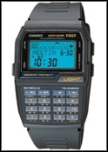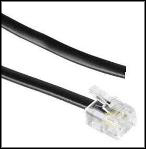
The topic was product teardown and its many benefits for assemblers. [Clickhereto read that article, called Progress From the Inside Out.]
This past summer I was required to do a little product teardown of my own in order to better understand the inner workings of a couple electronics devices.
Casio Data Bank 150
Let’s start with this multi-function wristwatch, which was given to me a by a friend. The friend had come across it while doing some cleaning out of drawers, and remembered using it as a mobile telephone directory-as well as a watch.
The 150 in the name refers to its 150-page databank. The device also is a stopwatch, an 8-digit calculator, a daily alarm and offers world time capability-meaning you can immediately find out what time it is anywhere in the world.
My friend estimated it hadn’t been used in at least 10 years. Not surprisingly, the friend had no owner’s manual and the only one side of the wristband was still attached. So if could get it working, I’d also have to invest a little bit in a new wristband. Not a bad deal, I thought, so I got to work.
The device didn’t even turn on, so I thought I’d start by removing the old battery and getting it replaced. Step one was finding my miniature screwdriver set to open up the four tiny screws on the back of the watch.
Once the four screws were removed, I gently pried off the metal backing and discovered 3 layers that also had to be removed to get to the battery. One layer was a component, while the other 2 were protective layers. All three had to be positioned exactly or the screws couldn’t be reattached.
I found this out on my first attempt-and accomplished it on my second try. At this point I pressed the activation button and the unit was on. I fiddled with the side buttons but to no avail. I needed the manual if I was to make this device useful to me.
A short time later, I did a web search and was able to download an owner’s manual. After some tinkering with the many buttons in the right combinations, I’ve been able to actually input some phone numbers. True, I already have these important phone numbers in my cell phone address book, but it’s nice to know I’m capable of doing a little product teardown, as well as a little product reactivation.

AT&T TR1909 Phone
Next up was this new phone purchased from a local Big Box Store. As I do with any new purchase I reviewed the manual and the provided accessories.Two things bothered me. One was the length of the provided connector wire that you use to connect the phone to the eye-level wall outlet. It was way too long. No problem, I thought. I’ll just go in my basement and search my box of old phone supplies and find a much shorter one.
After bringing the shorter piece upstairs, I decided to remove the long one from the phone. Unfortunately I discovered another thing that bothered me: one end of this connector didn’t have a modular plug that is easily accessible. Instead, this end went into the phone and wouldn’t come out unless I took the phone apart.
Okay, then, I’ll just open the phone and remove the modular plug from the inside…
WRONG!
What I found at the other end of the wire was a tiny circuit board that snapped into the phone nicely. Not one to mess with circuit boards, I promptly closed up the phone and tried to wall mount it with the long wire provided.
I didn’t like it and returned it to the store.
While there I asked the store salesperson why the provided connecting wire didn’t have modular plugs on each end. He wasn’t sure but assumed it was because of changing technology. I walked away thankful that product teardown had educated me about this changing technology.
As I write this, it occurs to me that, when doing product teardown, being able to keep one out of two devices ain’t bad-to paraphrase a well-known song.
But learning about assembly from two out of two devices is even better.

Recent Comments
Helpful for Trainees
Cable Assembly Manufacturers
Huawei for manufacturing?
should have a scanner and then 3D print the repair
IPC-A-610 and IPC-j-std-001